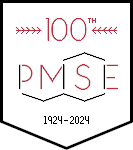Professor L. E. (Skip) Scriven of the University of Minnesota will receive the Roy W. Tess Award in Coatings for 2007. The announcement was made today by the Officers and the Award Committee of the Division of Polymeric Materials: Science and Engineering (PMSE) of the American Chemical Society.
In a long, prolific and illustrious career, Professor Scriven from the 1970’s focused on coating science and coatings processes. He led an internationally renowned research program dedicated to understanding coating application processes, using detailed theoretical modeling and experimental flow visualization to get at the crucial operating parameters in industrial coatings flow processes. Since 1990, he has turned his attention to film formation process in crosslinking and latex coating systems. Professor Scriven was a co-founder of the NSF Center for Interfacial Engineering (1988-1999) and long was Program Leader of the Coatings Process Fundamentals program at the University of Minnesota.
Professor Scriven earned his B.S. from the University of California, Berkeley in 1952. He earned his Ph.D. the University of Delaware in 1956. After working as a Research Engineer for the Shell Development Co. in Emeryville, CA, he joined the faculty of the University of Minnesota as an Assistant Professor of Chemical Engineering in 1959. He became a Full Professor in 1966 and Regents Professor of Chemical Engineering and Materials Science in 1988. He is a Fellow of the Minnesota Supercomputer Institute and past member of the Graduate Faculties of Biophysics and of Fluid Mechanics.
Professor Scriven has advised or co-advised over 100 Ph.D. students and authored over 400 publications. His work on coating processes includes coil coating, blade coating, spray application, spin coating, slot coating, and others. His research has combined experimental, theoretical and computer modeling approaches wherein he and his co-workers have shown the power of large finite element models to elucidate the causes of various processing issues such as ribbing instabilities. He has developed key understandings around the effects of rheological properties, evaporation rates, internal stresses and process boundary conditions on coating applications. He has improved experimental techniques for flow visualization and controlled freezing techniques to arrest solidification and enable the use of advanced microscopy techniques in coatings characterization. His research has been applied to coil coating processes, paper coating, inkjet printers, magnetic and optical disks, photographic films, liquid crystal displays, automotive finishes, printed circuits, optical fibers and others. More recently he has carried out very detailed studies of the compaction processes and water movement in latex films and the stresses that coalesce latexes.
Professor Scriven has held distinguished visiting professorships and lectureships, and he has served on many committees for outside and national organizations. He is a Fellow of the American Institute of Chemical Engineers and the Technical Association of the Pulp and Paper Industry (TAPPI). Some of the more recent awards he has received include two Roon Awards from the Federation of Societies of Coatings Technology (1993 and 2002), the ACS Murphy Award in Industrial and Engineering Chemistry (1990), the Tallmadge Award in Coating Science and Technology (1992) and the Founders Award from the American Institute of Chemical Engineers (1997). He was elected to the National Academy of Engineering in 1978.
Professor Scriven will receive the Tess Award from Prof. Elliot P. Douglas, Chair of the PMSE Division, on Monday, August 20, 2007 during the 234th Meeting of the American Chemical Society in Boston, MA. Professor Scriven will present an Award Address at that time. An evening reception sponsored by the PMSE Division will follow the Award Symposium.
The Tess Award is presented annually by the Division of Polymeric Materials: Science and Engineering in recognition of outstanding contributions to coatings science and technology. It is funded by a grant to the Division from Dr. and Mrs. Roy W. Tess. The purpose of the award is to encourage interest and progress in coatings and recognize significant contributions to the field. The Award consists of a plaque and a cash prize.




